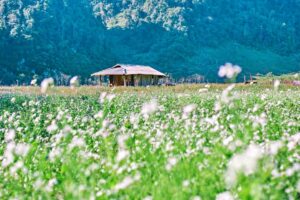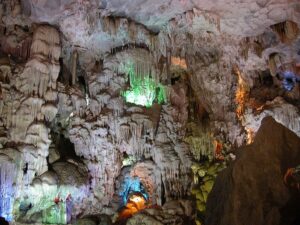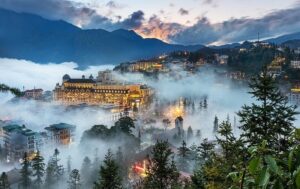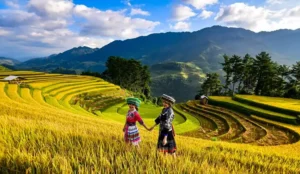Lai Chau
Lai Chau is a region known for its breathtaking caves deep within the mountains, its perilous, towering mountain passes, its tallest peaks in the country, waterfalls hidden within lush forests, traditional Phong Tho Xoe dances, and charming community-based tourism villages. All of these create a stunning landscape that captivates countless visitors.
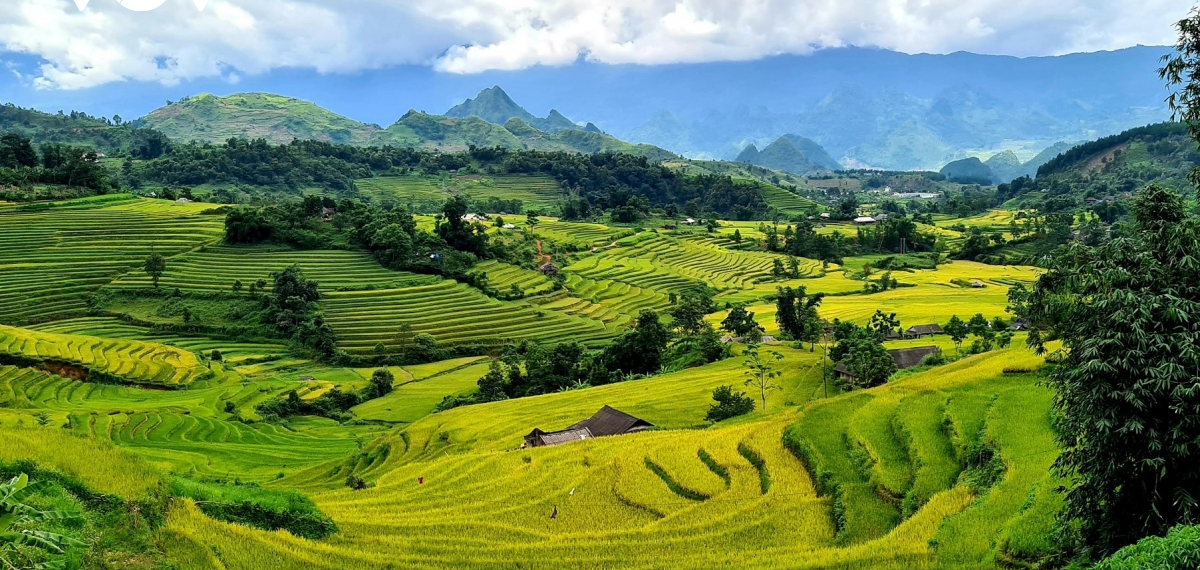
Lai Chau is home to several ethnic minorities, including the H’mong, Tay, Thai, and Dao people, each with its own distinct customs and traditions. These communities contribute to the vibrant culture of the region, offering visitors a glimpse into the lives and heritage of the people who have called Lai Chau home for centuries.
O Quy Ho Pass
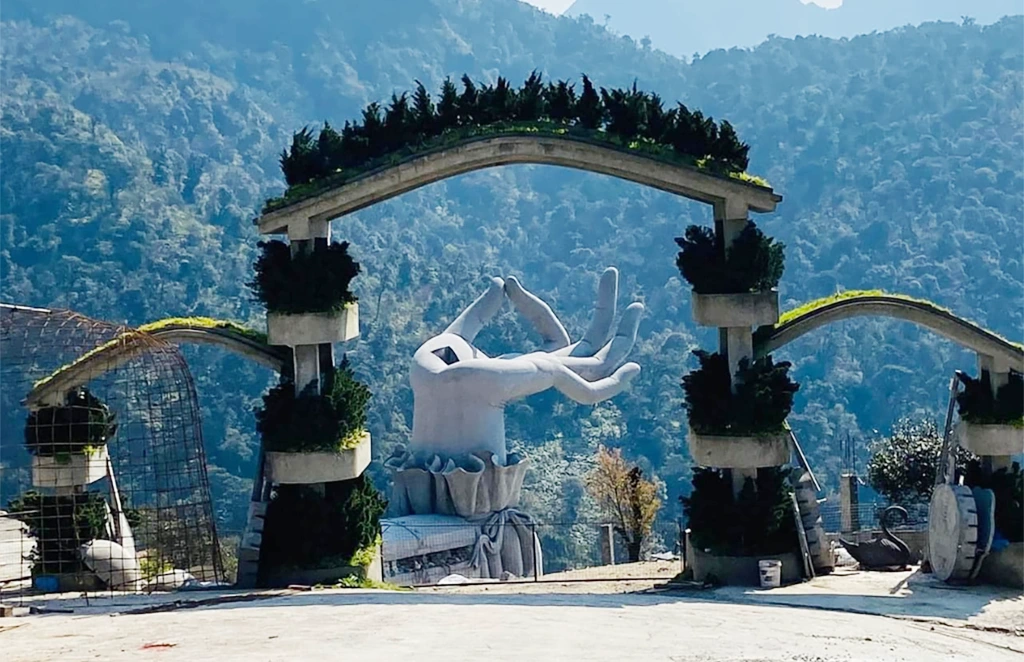
O Quy Ho Pass stretches nearly 50 kilometers, with two-thirds of the road located in Tam Duong District, Lai Chau, and the rest in Sa Pa, Lao Cai. The pass is said to be named after the sorrowful call of a bird, linked to an unfulfilled love story. Standing on the pass, visitors can easily spot the Chu Va Peak in Son Binh Commune, Tam Duong District, Lai Chau.
Pu Ta Leng Peak
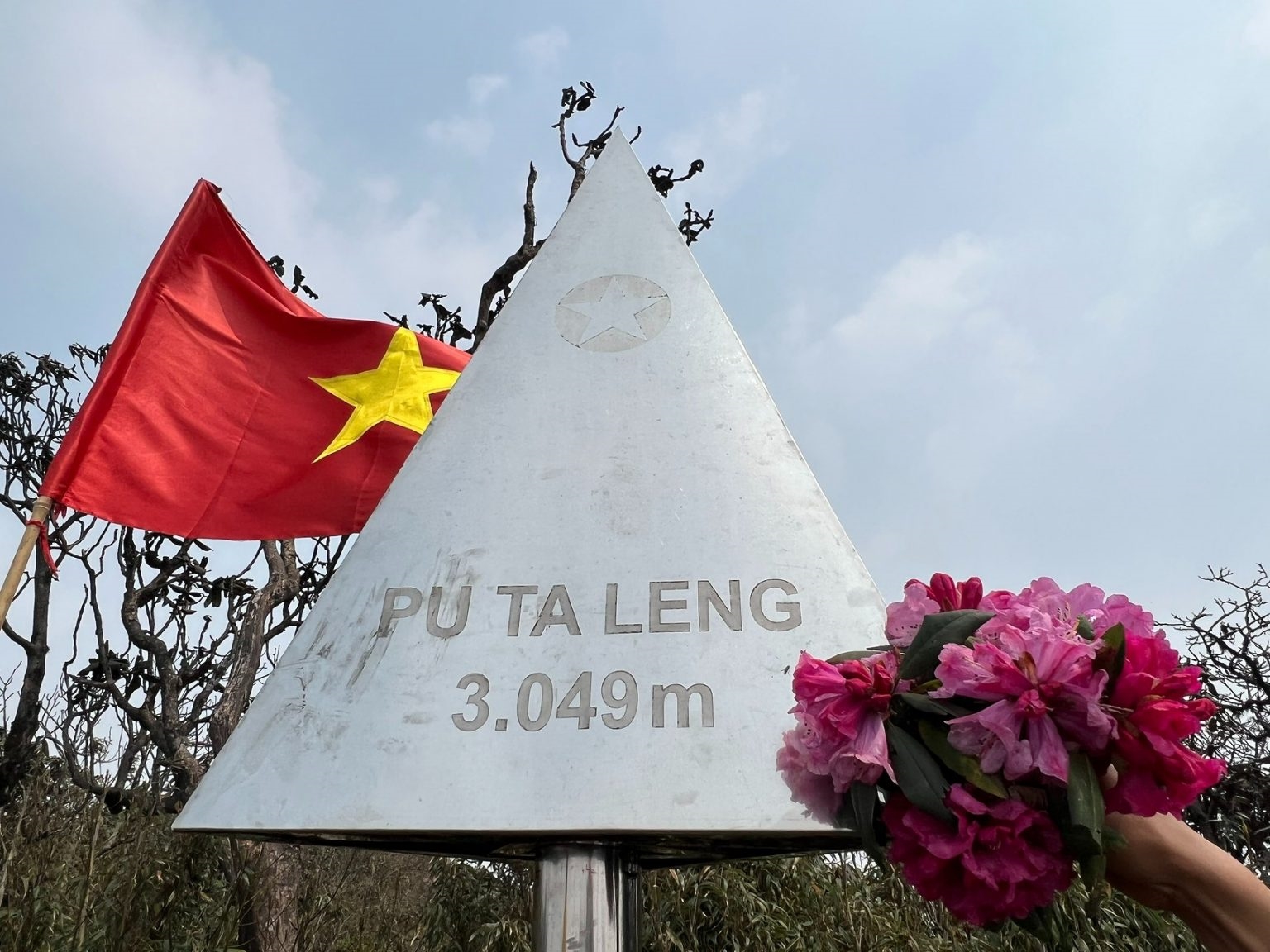
Located about 20 kilometers northeast of Lai Chau City, Pu Ta Leng stands at 3,049 meters above sea level. If Fansipan is considered the “roof of Indochina,” then Pu Ta Leng is the second highest peak, often sought after by adventurous trekkers and young people eager to conquer its summit at least once. The best time to visit is from October to April, when the natural beauty is at its peak, with wildflowers, especially the blooming rhododendron, adorning the mountainside all the way to the top.
Sin Ho Plateau

Known as the “roof of Lai Chau,” the Sin Ho Plateau boasts a year-round cool climate, dense primeval forests, valleys with golden rice fields, orchards heavy with fruit, and simple stilt houses veiled in the morning mist. This place is a magnificent creation of nature, offering both a romantic and captivating view, as well as a poetic and rustic charm that leaves visitors reluctant to leave and impossible to forget.
Pu Sam Cap Cave System
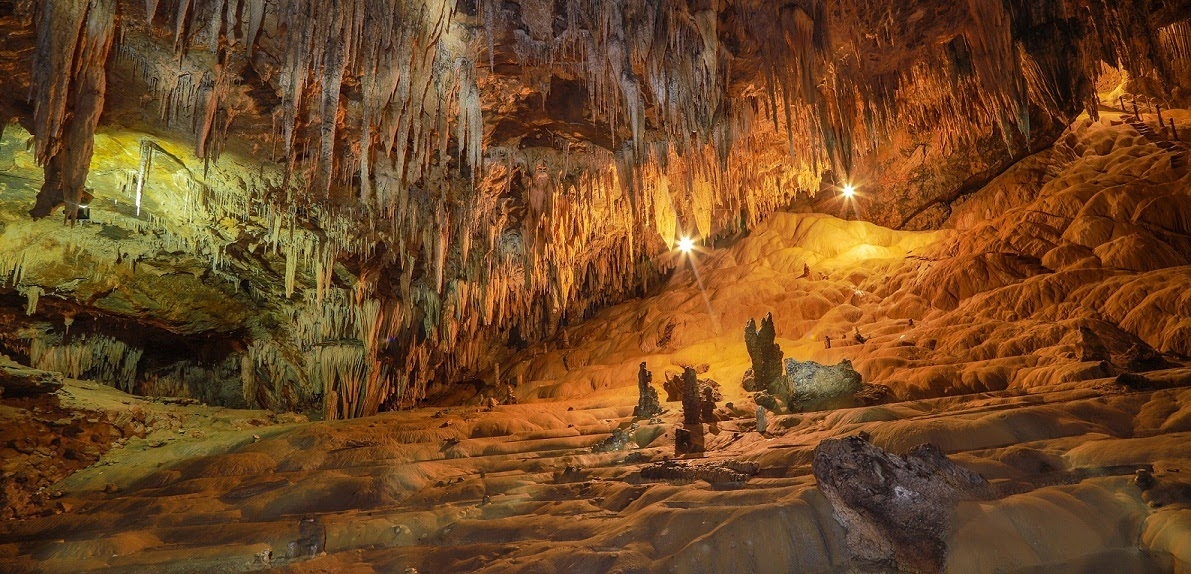
The Pu Sam Cap Cave system consists of numerous caves located in the Pu Sam Cap mountain range, at an elevation of between 1,300 meters and 1,700 meters above sea level. This famous Lai Chau tourist destination, located along Provincial Road 129, connects Lai Chau City with Sin Ho District, features three large caves: Thuy Tinh (Water Cave), Thien Duong (Paradise Cave), and Thien Mon (Heaven’s Gate). Visitors to this area will be amazed by the pristine beauty of the caves and the surrounding landscape.
Cultural Experiences in Lai Chau
Lai Chau is not only a place of natural beauty but also a rich cultural hub. The province is home to many ethnic minorities, each with its own unique customs, language, and traditions. Visitors to Lai Chau can immerse themselves in the local culture by participating in traditional festivals, trying local foods, and exploring the daily lives of the indigenous people.
One of the most prominent cultural experiences in Lai Chau is the chance to witness traditional dances and music. The Xoe dance, a traditional dance of the Thai people, is performed during festivals and celebrations. Visitors can also learn about local crafts such as weaving, embroidery, and wood carving, which are integral to the cultural identity of the region.
